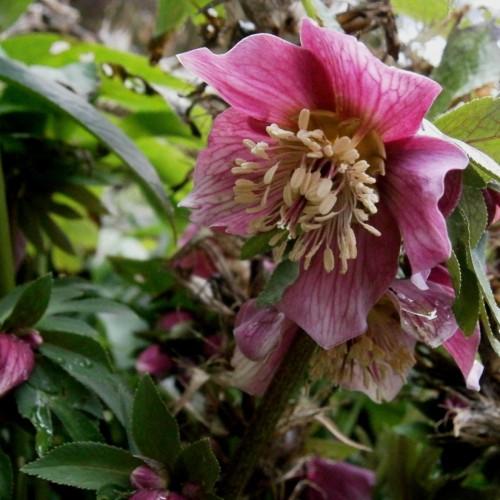
hellebore
Helleborus orientalis subsp. abchasicus (Early Purple Group)
Cycle:
Herbaceous Perennial
Watering:
Average
Hardiness Zone:
5 - 9
Flowers:
Flowers
Sun:
Part shade,full shade
Leaf:
Yes
Growth Rate:
Low
Maintenance:
Low
Poisonous To Pets:
Yes
Salt Tolerant:
Yes
Care Level:
Medium
watering
Early Purple Group Hellebore plants need to be watered weekly. In their first growing season, keep the soil moist but not wet in order to encourage healthy root growth. As the weather warms up, reduce watering to once a week or slightly more if needed. On hot days, it's best to provide shelter to protect these plants from direct sunlight. In the fall, decrease watering and allow the soil to dry out slightly before watering. During the winter, water plants every 2 to 3 weeks or when the top of the soil becomes dry.
sunlight
Early Purple Group hellebores prefer partial sunlight, but will tolerate full sun as long as it is not too intense. They should receive 4-5 hours of direct sunlight each day, ideally in the morning or late afternoon. Morning sun will help them to dry off any dew that has accumulated on the leaves. Too much direct sunlight can cause the leaves to scorch, so it's important to provide some afternoon shade to help keep them from getting too hot.
pruning
Hellebore should be pruned in early spring after flowering but before any new growth appears. If the foliage is evergreen, the plant should be lightly pruned in mid-winter as well. Prune off any dead or damaged stems, then thin out any overgrown stems to reduce overcrowding. Remove any flower stems that have finished flowering. Prune the stems back to their base, leaving at least 2 leaves on each stem. Prune about a third of the stems each year to keep the plant in a neat, contained shape.
